AY 25/26


Bachelor of Landscape
Architecture
BLA Programme Handbook AY 2025/2026
Department of Architecture
College of Design & Engineering
National University of Singapore

AY 25/26


Bachelor of Landscape
Architecture
BLA Programme Handbook AY 2025/2026
Department of Architecture
College of Design & Engineering
National University of Singapore
Administration Office
Mailing Address
Department of Architecture
National University of Singapore College of Design and Engineering
Department of Architecture
4 Architecture Drive SDE1 #03-01 Singapore 117566
Programme Director
Dr. Terrence Tan Chun Liang tcl@nus.edu.sg
Administrative Team Lead
Alicia Wong Foong Foong aliciawong@nus.edu.sg
Programme Manager
Neesha Suryakant Shinde neesha84@nus.edu.sg


TERRENCE TAN
BLA Programme Director
A warm welcome to our Bachelor of Landscape Architecture (BLA) family at NUS!
In 2025, we proudly celebrated the graduation of our third cohort of BLA students, with strong enrolment figures reflecting the continued interest in our programme. As more of our graduates enter the workforce, we are encouraged by the collaborative efforts of academia and industry in addressing the urgent challenges facing the built environment and in advancing Singapore’s vision of a green city.
Our programme is designed not only to equip students with the core competencies of landscape architecture but also to cultivate their ability to integrate ecological systems, social dynamics, and human experience into cohesive and meaningful landscape narratives.
At NUS, students are encouraged to explore diverse interests and define their unique path in the field. We invite you to make the most of the wide range of courses available, engage deeply with your peers, and strive to realise your full potential.
We hope the BLA programme offers you a strong foundation for a career grounded in thoughtful design, addressing the critical issues of urbanisation and socio-ecological resilience through sound technological and scientific inquiry.
This handbook serves as a guide for incoming students, offering essential information on curriculum, academic regulations, grading, and access to resources such as scholarships, student exchanges, and internships. We trust it will help you begin your academic journey and prepare you to lead in the planning, design, and development of landscapes in Singapore and beyond.
The core emphasis of NUS LANDSCAPE ARCHITECTURE is excellence in design We imbue our students with a deep understanding of the dual nature of design as both a process and a product. As a process, we prioritize landscape design to be creative, but one which is grounded in socio-cultural sensitivities, ecological knowledge, and grasp of conventional and emergent technologies and techniques. Design, as a process, benefits from synergistic knowledge exchange among multiple disciplines in NUS as one of the top research-intensive universities in Asia and the world. As a product, landscape design expressed through various visual and digital media, must be inspiring, move the heart, and above all, instigate meaningful and impactful landscape changes in real life.
NUS LANDSCAPE ARCHITECTURE is distinctively Asian and pantropical in its geographic attention and urban in its emphasis. With our central location in one of the most dynamic, diverse and rapidly urbanizing regions of the world, we aim to provide a landscape architecture education that is sensitive to the myriad challenges facing Asian cities, as well as opportunities provided by the sheer richness of heritage and cultural, socioeconomic and ecological elements of the region. Our location in Singapore, with its diversity of culture and cosmopolitan outlook, and where greening and ecology of the built environment is a cornerstone of its urban development approach, also provides an enriching backdrop to our training of landscape architects.
As we move into the Ecological Age, where the environment and nature increasingly become prioritized in land-use developments, landscape architects are well-poised to play a critical role in shaping an Environment that affects the majority of the world’s population. To that end, we train our students to design, build, and manage design projects of different scales and context.
Our graduates are expected to navigate the demands of the profession, and the dynamism and challenges the environment presents, and to be leaders and stewards in shaping a liveable, sustainable and resilient environment.
For an up-to-date academic calendar, special terms as well as public holidays, please refer to the following link from NUS Registrar’s Office:
https://www.nus.edu.sg/registrar/calendar
The BLA is a four-year Honours degree programme that provides core foundation training in skills and knowledge preparing students for professional practice or entry into advanced master’s degree programmes.
In the first year, students are introduced to foundational concepts in design: ways of sensing, reading, understanding, and interpreting fundamental landscape elements in forms, structures, materiality, and functions. A basic grounding in the first year includes introduction of landscape architecture, history and theory, and essential landscape representation techniques.
In the second and third years, students’ progress to acquire more advanced skills in site representation, site analysis, design representation specialized software, and spatial analytical tools. Students begin to synthesize landscape forms, structures, processes and functions with more specialized knowledge in planting design, landscape engineering, and advanced water sensitive urban design.
In the fourth year, students decide how to utilise their unrestricted elective space. Those who stick with landscape architecture offered a choice of two specialisations, one in Landscape Studies and another in Landscape Practice. Both of which further enrich and deepen a student’s knowledge in the field and to prepare them to enter the workforce.
Upon completion of the four-year programme, students will receive the Bachelor of Landscape Architecture (BLA) and are eligible to apply for the MLA programme with direct admission into the second year of MLA if they fulfil the necessary criteria for advanced placement credits (APCs).
GCE A-LEVEL, IB DIPLOMA,
NUS HIGH SCHOOL DIPLOMA, OTHER HIGH SCHOOL QUALIFICATIONS
LANDSCAPE ARCHITECTURE DIPLOMA
NUS BLA GRADUATE
EXEMPTED FROM MLA 1* (APPLICATION REQUIRED)
+ 3 YEARS OF PRACTICE
MLA 1
RELEVANT BACHELOR DEGREES
MLA 2
+ 2 YEARS OF PRACTICE
LANDSCAPE ARCHITECTURE ACCREDITATION
SINGAPORE INSTITUTE OF LANDSCAPE ARCHITECTS (SILA)
W.E.F AY24/25, SILA will recognise only the BLA degree with Specialisations in Landscape Studies or Landscape Practice
*To qualify for exemption, BLA students will have to read 40 units worth of courses found in Page 14, including LAD4008 Design 7 and LAD4010 Design 8, in their final year of study
REQUIRED UNITS
For BLA Students without APCs
For students from Singapore Polytechnic - Diploma in Landscape Architecture and NAFA with a Diploma in Design (Landscape and Architecture)
For students from Ngee Ann Polytechnic – Diploma in Landscape Design & Horticulture
For students from Temasek Polytechnic – Diploma in Interior Architecture and Design
Singapore Polytechnic – Diploma in Architecture
Nanyang Polytechnic – Diploma in Architecture Nanyang Polytechnic – Diploma in Experiential Product and Interior Design
For students from Polytechnics with unrelated Diplomas
1. All NUS students need to fulfil a minimum total of 160 Units in order to graduate with the 160 Units divided into 4 categories, Core Courses (specific to the programme), Common Courses (common between all CDE students), General Education Courses (for all NUS students) and Unrestricted Electives (specific courses chosen by the student).
2. Students with different polytechnic diplomas have different Advanced Placement Credits (APCs), please refer to following page on APCs.
3. The Unrestricted Elective (UE) space can be towards obtaining specialisations, minors and/or a second major.
Core: Core Course
Common: Common Course
GE: General Education Course
UE: Unrestricted Elective
APC: Advanced Placement Credit
Singapore Polytechnic Landscape Architecture
Temasek Polytechnic Environment Design
Nanyang Academy of Fine Arts
Design (Specialisation in Landscape & Architecture)
Ngee Ann Polytechnic Landscape Design and Horticulture
LAD1001A Design 1 (8 units)
LAD1005 Design 2 (8 units)
LAD1001A Design 1 (8 units)
Singapore Polytechnic Architecture
Architectural Technology Interior Design
Temasek Polytechnic Interior Architecture & Design Retail and Hospitality Design
Nanyang Polytechnic Architecture
Space and Interior Design
Spatial Design
Experiential Product & Interior
Design (new diploma formed by merger of Diploma in Spatial Design & Diploma in Industrial Design)
LAD1001A Design 1 (8 units)
Of the 160 Units required to graduate, the following list of courses are specifically required.
Students with APCs (see previous page) are exempted from taking selected courses based on their respective diplomas held.
Core Courses (Core)
LAD1001A Design 1
LAD1005 Design 2
LAD1003 Introduction to Landscape Architecture
LAD2003 Landscape Construction I
LAD2008 Landscape Representation
LAD2009 History and Theory of Landscape Architecture
LAD2006 Design 3
LAD2007 Design 4
LAD2004 Planting Design and Horticulture
LAD2010 Landscape Ecology
LAD2005 Introductory GIS for Landscape Architecture
LAD3001 Design 5
LAD3002 Design 6
In the first three years, design studios introduce students to six ways of design – sensing, interpreting, retrofitting, envisioning, digitalising, and transforming. Three related emphases will guide each studio with accumulative and augmented learning outcomes. Together with design studios, essential lecture courses are conducted in unison to equip our students with the necessary knowledge for a career in the landscape architecture profession.
In the fourth year of the programme, all courses offered by landscape architecture become “optional” unrestricted electives which students can choose to take up landscape specific specialisations (see next page) or otherwise.
LECTURE
INTRODUCTION TO LANDSCAPE ARCHITECTURE
LANDSCAPE CONSTRUCTION I
LANDSCAPE REPRESENTATION
PLANTING DESIGN
LANDSCAPE ECOLOGY
HISTORY AND THEORY OF LANDSCAPE ARCHITECTURE
INTRODUCTORY GIS FOR LA BLARECOGNISED ELECTIVE
(LAD3005 LA INTERNSHIP / LAD3003 PROFESSIONAL PRACTICE)
As part of the new undergraduate curriculum structure for students enrolled in the academic year starting in August 2021, students are required to read an equivalent of 10 courses outside of their main discipline. They comprise of 6 General Education courses (GE) imparting interdisciplinary skills and 4 Common courses (Common) which enhance the students’ learning experience across the University.
COMMON COURSES
ADVANCED DESIGN THINKING
INTRODUCTION TO GIS
DIGITAL TECHNIQUES IN LA
POLITICAL ECOLOGY AND LANDSCAPES
URBAN ECOLOGY & DESIGN
LANDSCAPE CONSTRUCTION II
URBAN GREENING: TECHNOLOGIES AND TECHNIQUES
SPECIAL TOPICS IN LA
DESIGN AND MAKE FOR THE BUILT ENVIRONMENT PROJECT MANAGEMENT AND FINANCE AI FOR DESIGN
GENERAL EDUCATION COURSES
QUATITATIVE REASONING WITH DATA
SPATIAL COMPUTATIONAL THINKING
LIVEABLE CITIES 3 X GEs
The BLA programme offers a broad range of topics to meet the diverse demands of the landscape architectural profession. However, through the two offered specialisations tracks in the fourth year of the BLA programme, it also encourages students to develop an expertise in particular areas of landscape architecture by utilising their Unrestricted Elective space.
The Landscape Practice Specialisation is specific for students who wish to enter the practice of landscape architecture. Students seeking to obtain this specialisation are required to take both design studios in year 4 along with Landscape Construction II to bolster their understanding on how to design and build actual landscape projects upon graduation.
In comparison, the Landscape Studies specialisation seeks to deepen and broaden our student’s understanding of more advanced topics in landscape architecture beyond just practice. As such, other than the Design 7 which serves as a common course across both specialisations, students can choose 3 out of 6 unrestricted electives which interests them to fulfil the requirements for this specialisation.
LAD4006 DIGITAL TECHNIQUES IN LANDSCAPE ARCHITECTURE 4 UNITS
LAD4007 POLITICAL ECOLOGY AND LANDSCAPES 4 UNITS
LAD4012 URBAN GREENING: TECHNOLOGIES AND TECHNIQUES 4 UNITS
IN LANDSCAPE ARCHITECTURE 4 UNITS
Note that while specialisations are optional for graduation, it is highly encouraged that students who are keen on pursuing a career in the landscape architectural profession take up at least one of these specialisations if not both.
W.E.F. AY24/25, SILA will recognise only the NUS BLA degree with Specialisations in Landscape Studies or Landscape Practice.
FOR STUDENTS WITHOUT ADVANCED PLACEMENT CREDITS TO OBTAIN BOTH SPECIALISATIONS
LAD1003 INTRO TO LA 4 UNITS
BLA-RECOGNISED ELECTIVE (LAD2005 LA INTERNSHIP / LAD3003 PROFESSIONAL PRACTICE) 4 UNITS
PROJECT MANAGEMENT AND FINANCE 4 UNITS
DIGITAL TECH IN LA 4 UNITS LAD4003 LANDSCAPE CONSTRUCTION II 4 UNITS AR5301 INTRODUCTION TO GIS 4 UNITS
URBAN GREENING: TECH 4 UNITS
URBAN ECOLOGY AND DESIGN 4 UNITS LA5901 SPECIAL TOPICS IN LA 4 UNITS
Choose 3 out of 6 electives if taking Specialisation in Landscape Studies
The Landscape Architecture Internship Programme should be taken during the May-July semester break between BLA years 3 and 4. Refer to Landscape Architecture Internship Programme page for more information.
FOR STUDENTS WITHOUT ADVANCED PLACEMENT CREDITS TO OBTAIN A SPECIALISATION IN LANDSCAPE STUDIES
LAD1001A DESIGN 1 8 UNITS
LAD1003 INTRO TO LA 4 UNITS
DESIGN THINKING 4 UNITS
BLA-RECOGNISED ELECTIVE (LAD2005 LA INTERNSHIP / LAD3003 PROFESSIONAL PRACTICE) 4 UNITS
INTRODUCTION TO GIS 4 UNITS
Choose 3 out of 6 electives if taking Specialisation in Landscape Studies
The Landscape Architecture Internship Programme should be taken during the May-July semester break between BLA years 3 and 4. Refer to Landscape Architecture Internship Programme page for more information.
The Landscape Architecture Internship Programme should be taken during the May-July semester break between
and 4. Refer to Landscape Architecture Internship Programme page for more information.
FOR STUDENTS FROM:
SINGAPORE POLYTECHNIC – DIPLOMA IN LANDSCAPE ARCHITECTURE NAFA – DIPLOMA IN DESIGN (LANDSCAPE AND ARCHITECTURE)
TO OBTAIN A SPECIALISATION IN LANDSCAPE STUDIES YEAR 1 – SEM 1
LAD2006 DESIGN 3 8 UNITS LAD2007 DESIGN 4 8 UNITS LAD3001 DESIGN 5 8 UNITS
LAD1003 INTRO TO LA 4 UNITS
LAD2003 LANDSCAPE CONSTRUCTION I 4 UNITS
BLA-RECOGNISED ELECTIVE (LAD2005 LA INTERNSHIP / LAD3003 PROFESSIONAL PRACTICE) 4 UNITS
DESIGN 6 8 UNITS
LAD2009 HISTORY & THEORY OF LA 4 UNITS
LAD2004 PLANTING DESIGN AND HORTICULTURE 4 UNITS LAD2008 LANDSCAPE REPRESENTATION 4 UNITS LAD2010 LANDSCAPE ECOLOGY 4 UNITS PF1101A PROJECT MANAGEMENT AND FINANCE 4 UNITS
CDE2212
LAD2005 INTRODUCTORY GIS FOR LA 4 UNITS EG1311BE DESIGN AND MAKE 4 UNITS
Choose 3 out of 6 electives if taking Specialisation in Landscape Studies
The Landscape Architecture Internship Programme should be taken during the May-July semester break between BLA years 3 and 4. Refer to Landscape Architecture Internship Programme page for more information.
SINGAPORE POLYTECHNIC – DIPLOMA IN LANDSCAPE ARCHITECTURE NAFA – DIPLOMA IN DESIGN (LANDSCAPE AND ARCHITECTURE)
TO OBTAIN A SPECIALISATION IN LANDSCAPE PRACTICE
The Landscape Architecture Internship Programme should be taken during the May-July semester break between BLA years 3 and 4. Refer to Landscape Architecture Internship Programme page for more information.
NGEE ANN POLYTECHNIC – DIPLOMA IN LANDSCAPE DESIGN AND HORTICULTURE
TO OBTAIN A SPECIALISATION IN LANDSCAPE STUDIES YEAR 1 – SEM 1
The Landscape Architecture Internship Programme should be taken during the May-July semester break between BLA years 3 and 4. Refer to Landscape Architecture Internship Programme page for more information.
NGEE ANN POLYTECHNIC – DIPLOMA IN LANDSCAPE DESIGN AND HORTICULTURE
TO OBTAIN A SPECIALISATION IN LANDSCAPE PRACTICE
BLA-RECOGNISED ELECTIVE (LAD2005 LA INTERNSHIP / LAD3003 PROFESSIONAL PRACTICE) 4 UNITS
The Landscape Architecture Internship Programme should be taken during the May-July semester break between BLA years 3 and 4. Refer to Landscape Architecture Internship Programme page for more information.
FOR STUDENTS FROM:
The Landscape Architecture Internship Programme should be taken during the May-July semester break between BLA years 3 and 4. Refer to Landscape Architecture Internship Programme page for more information.
The Landscape Architecture Internship Programme should be taken during the May-July semester break between BLA years 3 and 4. Refer to Landscape Architecture Internship Programme page for more information.
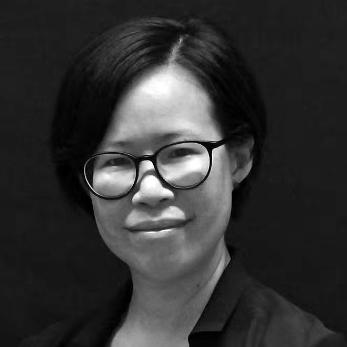




DOROTHY TANG
Assistant Professor, Master of Landscape Architecture Programme Director, PhD (Massachusetts Institute of Technology), MLA (Harvard University), BLA (Iowa State University, Registered LA, USA (New York) dstang@nus.edu.sg
ERVINE LIN
Senior Lecturer, Bachelor of Landscape Architecture Programme Director, Dr. sc. (ETH Zurich), MLA, B Arch (National University of Singapore) akilse@nus.edu.sg
MAXIME DECAUDIN
Senior Lecturer
PhD (University ParisSorbonne), M Arch, B Arch (Ecole Speciale d’Architecture), Registered Architect (HMONP) maxime@nus.edu.sg
JINDA QI
Assistant Professor PhD (University of New South Wales) jindaqi@nus.edu.sg


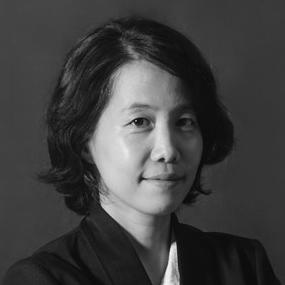

YIFENG LIN
MLA (Harvard University), RLA (U.S.A) yflin@nus.edu.sg

TERRENCE TAN
Senior Lecturer, PhD, M Arch, B Arch (National University of Singapore) tcl@nus.edu.sg
PUAY YOK TAN
Dean’s Chair Associate Professor, PhD (Cornell University), B Horticulture (Hons) (Massey University, New Zealand) puay.yok.tan@nus.edu.sg
YUN HYE HWANG
Associate Professor MLA (Seoul National University), MLAII (Harvard University), Accredited LA, Singapore. yhwang@nus.edu.sg
JANE MARSHALL
Senior Lecturer PhD Geography (National University of Singapore); MLA and Cert. Urban Design (University of Pennsylvania); BLA (University of New South Wales) marshall@nus.edu.sg
JANICE TUNG
BSLA (Cornell University), MLAUD (Harvard GSD) j_tung@nus.edu.sg





BRONWYN TAN
Part-time Tutor
MLA, BLA (Royal Melbourne Institute of Technology University), Accredited LA, Singapore bronwyntan@gmail.com

YU RONG PANG
Part-time Tutor
MLA, B Arch (NUS, Singapore) Accredited LA, ABC WP yyurongg@gmail.com
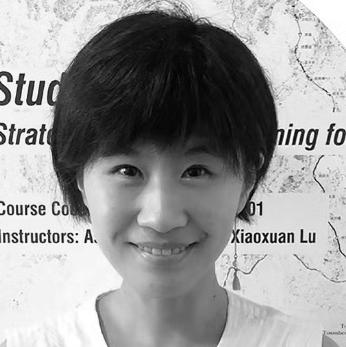
VARIT CHAROENVEINGVECHKIT
Part-time Tutor BLA (Chulalongkorn University) varitc02@gmail.com

JASMINE TAY
Part-time Tutor/lecturer
BLA Lincoln University Accredited LA, Singapore jasjul83@gmail.com
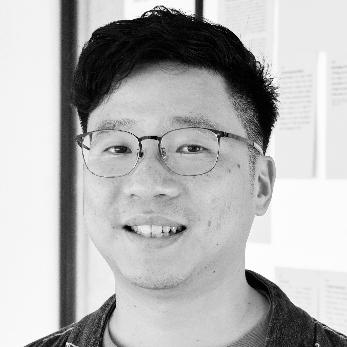
Part-time Lecturer
MLA, B Arch (National University of Singapore), Accredited LA, Singapore tanyitchuan@gmail.com

FAIZ ZOHRI
Part-time Tutor
B(Des) Man & Public Space, Design Academy Eindhoven faizzohri@gmail.com
XIAOXUAN LU
Visiting Associate Professor BArch SCI-Arc
MLA Harvard PhD Peking xxland@nus.edu.sg
VICTOR KUAN
Part-time Tutor
MLA, B Arch (Hons) (National University of Singapore), Accredited LA, Singapore v.kdesign@hotmail.com
ZI HAO WONG
Part-time Lecturer
PhD Architecture, M.Arch, B.A.Arch (Hons) (National University of Singapore) zh.wong@nus.edu.sg
BSc (NTU)
M. Life Sciences (Arizona State University PhD Biological Sciences (NUS) anuj@biosea.sg


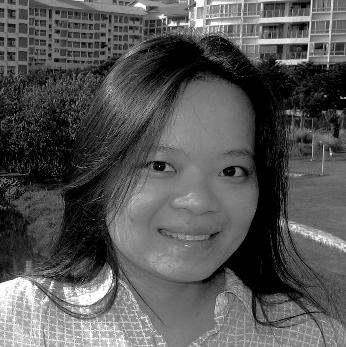


LARRY YEUNG
Part-time Tutor
M. Arch, B(Arch) Hon (National University of Singapore), larry@participateindesign.org

RUEN QING WONG
Part-time Tutor
MLA, B Arch (Hons) (National University of Singapore), Accredited LA, Singapore rq.wong@gmail.com

LIU HUEI LYN
Part-time Tutor
B Arch (University of Miami) MLA (Harvard University) hueilyn.liu@gmail.com

QUENTIN SIM
Part-time Tutor
M.Arch National University of Singapore, Registered Architect, Board of Architects Singapore sim@quentin.sg

ALFRED LEE
Part-time Lecturer
BS.LA (University Teknologi Malaysia), Accredited LA, Singapore alfred@seedworkscreations.com

ROSITA SAMSUDIN
Part-time Tutor
PhD, (National University of Singapore)
M Arch (Tsinghua), M Bdg Science (National University of Singapore) rosita.s@nus.edu.sg
AGNES SOH
Part-time Tutor
B Arch (National University of Singapore)
MLA (RMIT University, Melbourne) ags@grantassociates.com.sg
MELISSA YIP
Part-time Tutor
MLA (Uppen), B arch (National University of Singapore), Accredited LA, Singapore melyip36@gmail.com
LEHANA GUO
Part-time Tutor
MLA, B Arch (Hons) (National University of Singapore), Accredited LA, Singapore lehana.work@gmail.com
KOH JIANN BIN
Part-time Lecturer
MLA (University of Melbourne), BCE (Nanyang Technological University), CEng, Accredited LA, Singapore jiannbin@hotmail.com

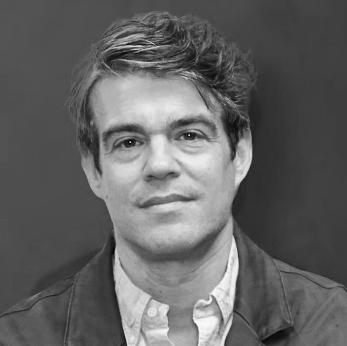
TIAN TONG GU
Part-time Tutor
Master of landscape architecture (University of Michigan); Master of urban design (University of California, Berkeley); Ph.D on-going at NUS gutiantong@u.nus.edu
JOSHUA COMRAROFF
Assistant Professor
PhD geography (University of California Los Angeles) jcomraroff@nus.edu.sg

WAI HON THAM
Part-Time Lecturer
M Arch, B Arch (National University of Singapore) Wh_tham@nus.edu.sg
The first core studio aims to familiarize landscape architectural elements with design sensibility. It introduces the primary design language used in landscape architecture forms, functions and processes. Through a set of design operations with fieldworks, drawings, and model makings, students will learn to observe, document and interpret natural phenomena as a design motive for creating an imaginary space where collectives of natural and artificial landscape elements coexist and work coherently together.
This course introduces landscape architecture as a professional discipline. It presents a survey of the development of the profession and how the profession responds to societal needs in providing services to various public and private clients. Emphasis is placed on understanding the significance of environmental, social and cultural, physical and visual, and aesthetic factors in developing intervention strategies and designs. Contemporary landscape architectural issues, leading practitioners and their works are presented. Lectures and in-class discussion will be supplemented with field trips that involve a variety of exploratory activities including walking, observing, sketching, photographing, and writing.
Learning objectives
Develop a critical eye to observe, describe and analyse landscape elements.
Understand forms, functions, processes of landscape elements.
Navigate the design thinking process that responds to landscape architectural approaches.
Develop design creativity through drawings and modelmaking with multi-media forms of representation.
Present design process and outcomes with explicit narratives and effective oral presentations.
LAD1005
DESIGN 2
8 Units
PRECEDENT, SCALES, EXPERIENCES
This course is the second of two core studios introducing students to basic design principles critical to the discipline. It focuses on the interface between people and nature to examine compositions, functions, and systems of landscape elements through precedent analyses and site observations. The course will foster student’s critical eye on identifying issues in our surrounding built environments and explain how these can be mitigated by landscape architectural design interventions using an interdisciplinary lens. The course will also expand on the development of graphical communication skills, including model making.
Understand architectural terms and drawing conventionsplans, sections, and scale.
Explore morphological and topographical analyses, and understand their relationship to human perception and experiences.
Expand design ideas by viewing them through the lenses of geographic, cultural, ecological, and historical contexts.
Develop a critical eye for observing sites and identifying issues.
Develop spatial visualization skills through 3D modelling and various drawing techniques
The field of landscape architecture requires a series of detailed steps to achieve successful design projects. This course develops students’ technical ability to effectively analyze and design a space with practical site engineering knowledge, legitimate / safety standards, and ideas on natural resource management. Landscape architects hold stewardship of the land as a key responsibility of the profession. Understanding design implementation process will enhance spatial sensitivity in students’ design responses along with a greater literacy in detailing.
This course is designed to develop advanced representational skills that make connections between software, technology and analogue modes, such as scripted algorithms, digital parametric tools, the media of film, animation, advanced fabrication and prototyping. The emphasis is not only on developing the students’ operational knowledge of the software and representation tools, but also on enhancing their ability to customize analysis and representational methodologies for a dynamic landscape.
This design studio will focus on key approaches to landscape architecture design, with an emphasis on site matters. The underlying theme of “Landscape as site” seeks to uncover human-nature relations in complex built environments, curated through proper site analysis and inventory. The key learning objectives include an appreciation of morphological and ambient components in the design palette, such as building configurations, threshold between indoors and outdoors, flora and fauna, the microclimate, etc. Students will be exposed to landscape design skills such as basic topographic manipulation and responses to existing or proposed buildings. In addition to landscape-driven learning objectives, the studio will place an emphasis on effective communication of design intention through drawings, virtual and physical models.
Understand the fundamental design process through deliverables in three phases:
1) site analysis
2) design strategies
3) translation of ideas into visual forms.
Explore design ideas that respond to the tropical context within a small scale landscape setting.
Use advanced graphics and visual communication skills to deliver design outcomes successfully
Understand and apply ecological principles, scenarios, and phasing in the design thinking process
Present ideas in concise and considered verbal, written and visual forms and engage effectively in studio and review discussions
This course focuses on designing with plants through (1) understanding unique growing urban conditions, covering aspects such as urban temperatures, water, nutrients, light, and soil; (2) design of planting areas to satisfy growth needs; (3) understanding the large diversity of plants suitable for different urban conditions; (4) planting design to ensure plants can thrive in urban areas.
This course will introduce students to basic ecological principles which underlie the practice of ecological landscape design. It will provide students with a fundamental understanding of the composition, structure and dynamics of ecological systems such as forests, lakes, streams, wetlands and cities. It will also provide students with a working knowledge of several ecological concepts such as stability, complexity, diversity, equilibrium, conservation, restoration, sustainability and resilience. A mixture of lectures, reading materials, field trips and discussions will assist students in providing insights on how to fill the knowledge gaps between the science of ecology and the practice of landscape architecture.
8 Units
This course develops competence in design and critical thinking by increasing the scale and complexity of the design task. Students will be challenged to investigate how high-density neighbourhood landscape design can be reimaged to be catered to various user groups. They are asked to identify strategies to maximize ecosystem benefits while considering livability of local residents, and the project’s long-term sustainability. Through interactions and participatory workshops with the community members, students will develop an understanding of competing landscape interests and how they can be managed. They will also work across a range of representational modes, including technical diagrams and three-dimensional modelling, to develop confidence in communicating their design proposal’s functional and aesthetic metrics to a broad audience.
Synthesize fundamental design principles and approaches through a residential landscape project that contains a high level of complexity of the urban landscape.
Employ GIS mappings, deep sections, axonometric drawings, infographics/diagrams as tools for design
Understand technical regulations, needs of local stakeholders, such as community members, business people, and agency representatives
Explore spatial design strategies for the interaction of residents and ecological systems
This course explores the underpinnings of landscape architecture exposing students to ideas that have moulded our understanding between the dichotomies of nature versus naturalistic, aesthetics versus economics, mimicry versus authenticity, and, how unravelling these can enrich their reading of the landscape. The course is organized around prevailing themes which have persisted over time as well as contemporary ones which have scant historical precedence. The goal is not to produce historians capable of identifying the nuances between landscape styles, but rather designers who are critical of landscapes that they see and experience, but more importantly design and build.
This course provides an understanding of the basic concepts and uses of Geographic Information Systems (GIS) technology and spatial analysis. By linking data to maps, GIS reveals relationships not apparent with traditional item-referenced information systems and database management products, and by displaying information in a graphic form, it unpacks complex spatial patterns. The course emphasizes the concepts needed to use GIS correctly and effectively for manipulating, querying, analyzing, and visualizing spatial data. The course includes tutorials and lab exercises that coincide with the studio site.
DESIGN 5
8 Units
This course continues to hone the level of competence in design skills by leveraging off knowledge that was gained in previous studios and appending it with digitally driven landscape architectural tools and techniques. The specific focus of this design studio course is to provide the necessary exposure to stateof-the-art technologies and techniques including digitally driven site data acquisition and analysis, form making as well as visual representations and is organized into a series of workshops which expose students to a range of innovative and potentially paradigm shifting digital tools and techniques.
Learning objectives
A familiarization with parametric modelling ideas and tools.
Confidence to evolve away from 2-dimensional thinking to embrace design and thinking in full 3D.
The ability to create and leverage off alternative digital visualization methods to showcase their design intentions.
To understand how play can be a driver for landscape design.
The ability to begin tackling landscape design at a larger scale.
The course will provide informative knowledge on how design proposals are developed as professional drawings, how they are constructed, and operated in professional landscape architecture practice. It will give an overview of the nature of a professionalism that requires the active integration of related design fields. The course will clarify the responsibilities of landscape architects within the design team, as well as among different stakeholder groups, including clients, users, landscape contractors, managers, and policy makers. It will also cover office and project management, contract procedures, construction administration, ethics, and different types of oral and written communication skills for professional practice.
This course continues to develop a level of competence in design skills and critical thinking through a design task that increases the scale and complexity of considerations. Focusing on a high-density urban context, students will be asked to transform existing monofunctional infrastructure by layering cultural, ecological, and biophysical functions to enhance surrounding natural ecosystems and redirect human and natural flows. The project asks students to consider how to create a sense of place, integrate passive and active recreational programmes, visualize visible and invisible flows of people and nature, and phase development over time. The course will also introduce a problem-solving approach in landscape design that will guide students toward logical and comprehensive design solutions.
Learning objectives
Understand the role of infrastructure as interconnected and complex urban ecosystems
Understand first-hand the scale and complexity of fitting all the requirements into high density urban zones
Identify opportunities and challenges in designing infrastructure
Understand how Policy, Planning, Engineering, and Finance dominate the decision-making process
Understand the Landscape Architect’s role in MultiDiscipline Teams for forward planning and design for mitigating the scale and impact of all components
Connect analysis-to-synthesis-to-design with GIS, maps, diagrams, data, 3-D graphics, and models
The internship programme aims to provide opportunities for third year students to work in landscape architectural firms or allied organisations with a design-centric focus to gain exposure and experience, and apply the knowledge learnt in school in the professional setting. Students are required to perform a structured and supervised internship in a firm/organisation for a minimum of 12 weeks. Weekly logbook as well as internship reports will be used for the evaluation of their internship experience. This course takes place over the summer vacation period (May to Aug).
8 Units
COMMON SPECIALISATION COURSE REQUIRED FOR LANDSCAPE STUDIES AND LANDSCAPE PRACTICE
This studio-based course develops higher level skills in landscape design and marks the first of four subsequent master-level core studios in landscape design. Projects of city quarter scale are undertaken to explore issues of context, programme and socio-economic considerations. Projects will cover sites with different functions, e.g. residential, commercial, industrial, educational, health and recreation. Civic spaces like roadsides, highways, plazas, parks and city squares will also be tackled. There is an emphasis on sustainability and tropical design
4 Units
FULFILLS COURSE REQUIREMENT FOR SPECIALISATION IN LANDSCAPE STUDIES
Landscape architecture is not shaped just by environmental and aesthetic considerations, but also by the process of social engagement, social hierarchies, and power structures in society. This course introduces students to key concepts and frameworks of political ecology, which is a broad field of study and research that focuses on socio-environmental conflicts and their origins. Through a variety of teaching and learning modes, students examine landscape case studies representing different contexts, scales, and histories to uncover diverse human–environment interactions. There is an emphasis on applying different tools and methods to conduct and communicate political ecology research.
FULFILLS COURSE REQUIREMENT FOR SPECIALISATION IN LANDSCAPE STUDIES
From the invention of the axe to surveying tools like the graphometre, technological advancements have always influenced how we document, understand, design and modify our landscapes. Perhaps the most influential was Geographic Information System (GIS) technology which allowed the convergence of topological, ecological and even social data into the discourse of landscape architecture. However, unlike the two dimensional nature of GIS, landscapes are inherently three dimensional. The course thus explores the various advances that allow landscape architects to operate within a 3D environment with data collected from reality, studied and modified through computational thinking, enriched through information modelling and tested through simulations.
FULFILLS COURSE REQUIREMENT FOR SPECIALISATION IN LANDSCAPE STUDIES
The course focuses on developing the knowledge and techniques of site analysis and planning, which are essential for sustainable landscape architecture. The course emphasizes on the systematic thinking of site and site alternatives in a broad context, in which the analysis is supported by contemporary theories and methodologies in landscape and urban ecology. Geographic Information System (GIS) software is used as the platform for the development of advanced techniques in analyzing, evaluating, managing, and modelling.
4 Units
FULFILLS COURSE REQUIREMENT FOR SPECIALISATION IN LANDSCAPE STUDIES
Urban ecology is the study of ecosystems that include humans living in cities and urbanising landscapes. It is an emerging, interdisciplinary field that aims to understand how human and ecological processes can coexist in humandominated systems and help societies with their efforts to become more sustainable. It has deep roots in many disciplines including sociology, geography, urban planning, landscape architecture, engineering, economics, anthropology, climatology, public health, and ecology which will be described in this class. The course is designed to introduce students to the fundamental principles of urban ecology so they can better integrate ecological principles in their future designs.
LAD4010
DESIGN 8
8 Units
FULFILLS COURSE REQUIREMENT FOR SPECIALISATION IN LANDSCAPE PRACTICE
The studio aims to develop novel design typologies that will enhance the ecological resilience and sustainability of urban and periurban landscapes. Students are asked to place landscapes within the larger geopolitical and socioeconomic forces that shape them and characterize the socio-ecological functions of sites at multiple scales. Application of various quantitative and qualitative methods through interdisciplinary approaches will contribute to determining the configuration, sizing, and functions of design projects.
4 Units
FULFILLS COURSE REQUIREMENT FOR SPECIALISATION IN LANDSCAPE STUDIES
This elective examines the histories, theories and contexts of settlements and landscapes in Southeast Asia over millennia, from the era of vernacular settlement formation to the present-day agglomerations of global centres. It provides in-depth presentations and discussions of architecture, cities, seascapes and landscapes in Southeast Asia. The objective is for class members to appreciate how spaces and cities in Southeast Asia came to be what they are, their concepts and models, and this in turn may assist in their formulation of ideas, perspectives and positions based on such deeper levels of understanding.
FULFILLS COURSE REQUIREMENT FOR SPECIALISATION IN LANDSCAPE PRACTICE
This course has two parts – application of water sensitive urban design (WSUD) in landscape design and professional landscape practice. It has three main areas; 1) Fundamental skills in landscape engineering knowledge for design of WSUD elements; 2) Socio-ecological considerations in application of WSUD in landscape design; 3) Professional and practical considerations in landscape architecture practice. Areas covered can include coordination with other practices in a development project, applicable codes of practices, ethical considerations in practice, etc.
FULFILLS COURSE REQUIREMENT FOR SPECIALISATION IN LANDSCAPE STUDIES
This course introduces students to contemporary and emerging technologies and techniques that have become essential components of urban greening design and practices. It traces the origins of such technologies and techniques as responses to challenges and opportunities in creating a green and ecologically balanced urban environment, explains their scientific underpinnings, and illustrates with examples of real-life applications.
*Course topic subject to changes. Please check with department for latest updates prior to enrolment
LAD4005
TOPICS IN LANDSCAPE ARCHITECTURE
4 UNITS
LAD3005
LANDSCAPE ARCHITECTURE INTERNSHIP PROGRAMME
4 UNITS
LAD3003 PROFESSIONAL PRACTICE
4 UNITS
The Landscape Architecture internship programme (LAIP) is an elective course to complement landscape architectural education. BLA students will be given the option to undergo this program under the guidance of the Department of Architecture as part of the BLA Elective course.
Students are generally advised to seek an internship in the same office for the full required period. The commencement of the LAIP can take effect only after the student has successfully passed the examinations of Semester 1 of BLA Year 3.
There will be an internship period from beginning of May to July spanning 12 weeks. A period of less than 12 continuous weeks in one firm is not acceptable for the purpose of the LAIP. Students can decide to intern for a longer period. Students will need to obtain approval from the Department if they wish to change their firm during their internship period.
The Department is concerned with the quality of experience and the variety of work-scope. Students should aim to use each task as an educational exercise to improve and advance their design knowledge and critical thinking.
The 12 Week internship carries 4 course units.
The Department recommends a fixed allowance of at least SGD1000 per month payable to students successfully completing each month of internship.
Placement must satisfy one of the following categories:
1. Singapore-based landscape architecture firm registered as Recognised Practices by Singapore Institute of Landscape Architects (SILA).
2. Allied professional offices, e.g., government authority/statutory board, or related design consultancy firms with a SILA accredited landscape architect working as a full-time member to be appointed as student’s supervisor.
3. Any other company not in the above categories are subjected to approval by the Department.
It is recommended that every firm committed to accept a student under this internship programme assigns a SILA accredited landscape architect to be the Office Internship Supervisor (OIS). Students should take the initiative to approach their OIS or other experienced colleagues in the office should they require assistance in carrying out their duties. Each student will report to his/her OIS after the first 6 weeks and at the end of the internship period. The dates will be determined in consultation with their OIS.
LAIP students are to seek their own placement in landscape architecture firms or other approved organisations, either though the NUS Talent Connect portal or direct contacts. They should consider the suitability for their intended internship experience upon selecting. The Course coordinator may give advice and counsel their students on various aspects of the internship programme before they venture to seek placement for their internship.
Students must keep a record of the weekly internship logbook duly signed by their OIS at the middle and the end of the internship period.
By week 12 of the internship, students are required to submit the following items with the OIS’s endorsement:
• Weekly internship logbook (format to be provided)
• Student’s report outlining the learnings from their internship experience (with both text and graphics)
• OIS’s assessment of the student’s performance
All materials will confirm students’ completion or non-completion of this course. An introductory briefing on the LAIP will be provided to students at the beginning of academic year. Detailed process on firm searching, evaluation criteria, etc. will be shared then.
The various scholarships are open to BLA undergraduates:
Offered to candidates who are passionate about Horticulture and possess a keen interest in pursuing a long-term career in this field. The Gardens will support our Scholars in embarking on their tertiary journey, with challenging and rewarding career paths and job rotations.
Design Singapore Scholarship is for individuals with creativity, drive and passion for design. The scholarship will groom designers to become designer leaders who will use strategy and innovation to make things better by design.
NParks Scholarship is for individuals who look forward to an exciting and challenging career, with opportunities to be exposed to various professional portfolios in NParks.
Philanthropist, entrepreneur, and investor, Mr Peter Lim in partnership with NParks has pledged $10 million to enable deserving youths from less privileged backgrounds to pursue their interest, support their skills development and build capability in the landscaping, horticulture, ecology, veterinary and animal science sectors.
BCA has a range of scholarship and sponsorship opportunities to cater to students at any career stage, with a focus on the Built Environment sector.
Refer to website below for more details. https://cde.nus.edu.sg/arch/programmes/bachelor-of-landscape-architecture/scholarships-andgrants/
Our extensive student exchange programme allows our students to enhance their academic experience and cultural exposure with leading architecture and landscape architecture schools, preparing our graduates to engage in the global practice of design through student exchanges.
School/Department Level Exchanges are established with the following Universities1:
Cornell Univ Coll of Agriculture & Life Sciences
Nanjing University
Pennsylvania State University
Purdue University
Technion-Israel Institute of Technology
Texas A & M University,College Station,Texas
The University of Auckland
The University of British Columbia
The University of Edinburgh
The University of Hong Kong
The University of Melbourne
The University of New South Wales
The University of Sheffield
Tongji University
Tsinghua University
University of California
University of Connecticut
University of Hawaii, Manoa
University of Illinois, Urbana-Champaign
University of Toronto
University of Virginia
Victoria University of Wellington
Waseda University
Zhejiang University
* List of host universities is subject to change. Refer to SEP related communications from the Department nearer to application date.
1. Placement in exchange programme requires successful application and acceptance by host universities.
All students share the responsibility to uphold the academic standards and reputation of the National University of Singapore. Academic honesty is a prerequisite condition in the pursuit and acquisition of knowledge. Academic dishonesty is any misrepresentation with the intent to deceive or failure to acknowledge the source or falsification of information or inaccuracy of statements or cheating at examinations/tests or inappropriate use of resources.
There are many forms of academic dishonesty; plagiarism is one of them. Plagiarism is generally defined as ‘the practice of taking someone else’s work or ideas and passing them off as one’s own’ (The New Oxford Dictionary of English). The University does not condone plagiarism.
Students should adopt this rule:
You have the obligation to make clear to the assessor which is your own work, and which is the work of others. Otherwise, your assessor is entitled to assume that everything being presented for assessment is being presented as entirely your own work.
Any student found to have committed or aided and abetted the offence of plagiarism may be subject to disciplinary actions in accordance with the Section 1 (I) of Statute 12 (Discipline) of the National University of Singapore. In addition, the student may receive no mark/grade for the relevant academic assignment, project, or thesis; and he/ she may fail or be denied a grade for the relevant subject or course.
In general, it is considered improper to use any available Artificial Intelligence (AI) tool to produce work and pass it off as your own work or idea. These tools include but are not limited to text generators and paraphrasing tools (e.g. ChatGPT, QuillBot AI, etc) or image generating tools (e.g. Midjourney, Stable Diffusion, etc).
However, the university is open to an ethical and proper use of AI when it is allowed. Please check with your individual instructor to understand if the use of an AI tool is acceptable for each specific assignment. In cases where an AI tool is indeed used, a clear acknowledgement of the tool, the prompts/inputs used and how it was used in the particular assignment should be clearly stated.
More information at:
https://libguides.nus.edu.sg/new2nus/acadintegrity
All students should note that, pursuant to NUS Statutes, any work prescribed to be done by a candidate in the course of his or her study for the Bachelor of Landscape Architecture may be deemed as the property of the University. Since the Department may be required to retain selected student work for exhibition, archiving and other reasons, students should make their own copies or records of their work for job interviews, competition entries, and other purposes.
Students’ performance will be assessed through various modes of continuous assessment. All work done within the studio courses will be assessed based on degree and quality of contextual understanding, critical thinking, creative design process and communication. Detailed evaluation criteria and grading weightage can be found in the brief of each course. The DOA Board of Examiners will govern all assessments.
Assessment can be based on tutorials, laboratories, projects, reports, as well as midterm and final examinations. A student’s final grade in a course will be based on absolute and relative performance. Accordingly, there may not be direct correspondence between particular marks in continuous assessment and the overall course grade.
Grades released to students will be in the form of letter grades: A+, A, A-, B+, B, B-, C+, C, D+, D, F.
The grade and grade point equivalent shall be in accordance with the University regulations as follows:
Grade Point Average (GPA)
Academic progress is tracked by the GPA, which is the weighted average grade point of all courses taken by the student. Therefore, a student’s GPA is the sum of the course grade points multiplied by the number of course credits (Units) for the corresponding course, divided by the total number of Units.
Courses with no assigned grade points and associated Units are excluded from the calculation of GPA.
An online GPA calculator is available here
The GPA simulation is based on the entries made by you for individual course grades. As such, NUS will not be held responsible for any misuse, mistakes or wrong decisions made arising from the use of this Online GPA Calculator.
GPA =
SUM (Course GRADE POINT X Units assigned to course) SUM (Units assigned to all courses)
To graduate, students must complete 160 Units with minimum “D” grade for all courses, and a minimum GPA of 2.0.
SINGAPORE-RELATED INFORMATION
https://www.nparks.gov.sg/florafaunaweb/
An online information portal featuring plants and animals found in Singapore.
https://www.nas.gov.sg/archivesonline/
Historical research, large repository of old maps and photos
LANDSCAPE ARCHITECTURE-RELATED
INFORMATION
https://www.asla.org/
A professional association for landscape architects in the United States. The website includes recent projects and awards
https://www.landscapeinstitute.org/
The Landscape Institute (LI) is the chartered body for the landscape profession in UK. The website includes recent projects and awards.
https://www.iflaworld.com/ifla-asia-pacific
IFLA Asia Pacific Region (IFLA APR) is a subgroup of the International Federation of Landscape Architects (IFLA) organization. The website includes recent news and awards.
https://www.toposmagazine.com/
Landscape Architecture Magazine for an international and interdisciplinary review for landscape architecture, urban design and urban development.
https://www.sila.org.sg
Professional association for landscape architects in Singapore - Singapore Institute of Landscape Architects (SILA), website includes updates on Industry events and CPD courses
https://www.sila.org.sg/la-future
Webpage of LA Future, a community of SILA Graduates and Student members, for mentoring of young professionals.
https://www.la-accreditation.org.sg
Information on accreditation process and requirement
SOFTWARE/DATABASE/TOOLS
https://academy.archistar.ai/login
An online library of tutorials on digital design skills. Learn all the different software needed in this course in your own time.
https://ugl.sg
An online resource of useful data and information, equipment and tools consolidated and updated by Senior Lecturer, Terrence Tan.
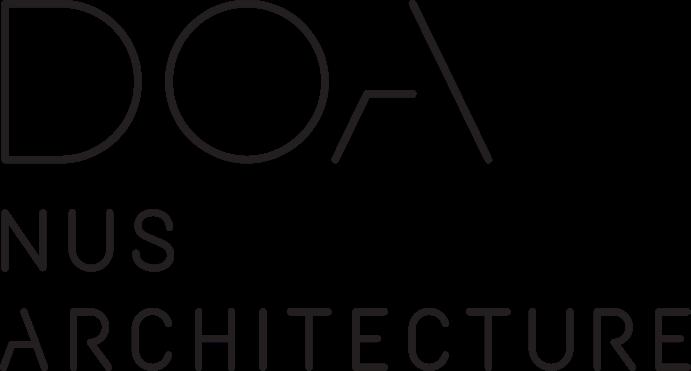
Updated 23 July 2025
Should there be deviation between information contained in this handbook and the relevant NUS websites, the information in NUS websites should be treated as the more updated and correct information. Information in this handbook is updated annually.